Caring for remontant raspberries to achieve a good harvest
Recently, more and more gardeners began to plant remontant varieties of fruit bushes on their personal plots. The remontant raspberry has gained particular popularity. A feature of all remontant varieties is that, with proper care, they can give two or even three harvests per season. Caring for remontant raspberries is not a particularly laborious process. In this article, we will provide helpful tips on how to grow, care for and prune remontant raspberries so that they produce an excellent harvest.
Content
Planting tips
Given that remontant raspberries, subject to certain rules and tips, can yield double or triple harvest, they have certain requirements for their care.
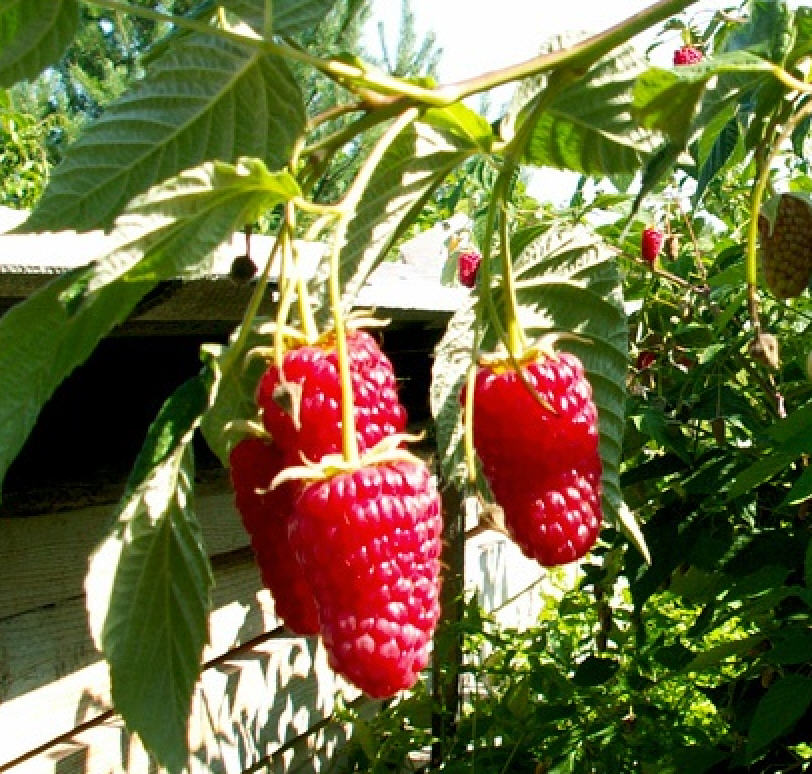
Every gardener knows that the planting site plays a key role in the subsequent yield of the plant. Such raspberries are no exception. So, let's figure out what conditions must be met when planting remontant varieties of raspberries.
Experienced gardeners give the following tips on this matter:
- it is necessary to plant such raspberries in a sunny place. A distinctive feature of remontant varieties from ordinary ones is that even a slight darkening can slow down the ripening of berries and reduce the overall yield of the bush;
- the place where remontant raspberries will grow should be warm. Therefore, you need to land on the south side of your personal plot. It is advised to plant raspberries near various buildings: houses, a barn, a fence. In this case, you will save the plant from unwanted drafts, and also help create a climate suitable for raspberries.
Some gardeners recommend planting a plant in places where snow melts most quickly in spring and the soil warms up, usually such places are found at the borders of garden plots.
If the remontant variety of raspberries was planted in a suitable place, then the ripening of the fruits will occur much earlier, and the yield will increase.
If you live in a hot climate, completely different rules apply. It is necessary to plant remontant raspberries in places that are slightly shaded and cooler.
You can plant remontant varieties on any soil, but most of all, such raspberries prefers fertile and loose soils. In the case of humus and peat in the soil, the bushes grow very tall and, often, they need to be propped up. In all other respects, the chemical composition of the soil does not affect the ripening time of the berries, as well as their taste. These indicators are affected only by the presence of plant nutrition in the process of its growth.
You cannot plant this plant in the place where the following nightshade crops grew last year: peppers, tomatoes, eggplant, potatoes.
It is strictly forbidden to plant raspberries in places where they have grown before. This is due to the fact that the soil in the place of long-term growth of raspberries shows signs of "soil fatigue", which occurs due to the gradual depletion of the soil, especially in minerals.
Simultaneously with depletion in the soil, certain substances accumulate in it, which are secreted by the root system of remontant raspberries. They inhibit the growth of newly planted plants. In such places, you can re-plant raspberries only after five or seven years.
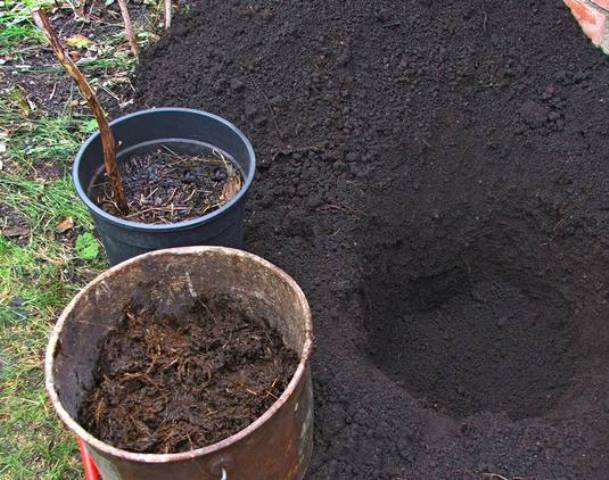
For a better yield, it is recommended to keep the soil "fallow" for a year before planting seedlings.It was also observed that this type of plant grows and bears fruit best after green manure crops (these are those green crops that are usually sown in the soil to increase and improve fertility). Green manure crops include lupine, vetch-oat mixture, white mustard, phacelia, mustard, Sudanese grass.
This raspberry is considered a water-loving plant, but it does not tolerate flooding and high groundwater levels. The latter should be no closer than 1-1.5 m from the surface from the surface.
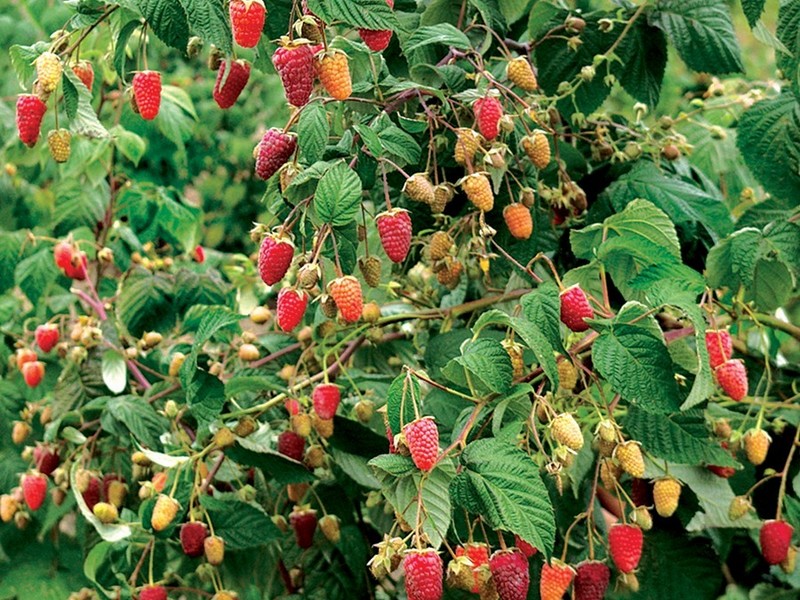
It is also advised to dig a site to a depth of about 60 cm. At the time of planting individual seedlings, you need to dig a hole to the same depth. Half a bucket of humus is added to the bottom of the hole. Some gardeners advise applying fertilizer to greater depths.
The root system of remontant varieties is more sensitive to the presence of chlorine in fertilizers. Therefore, only chlorine-free mixtures need to be applied under it. Chlorine fertilizers can be applied to the soil only in the fall.
Planting of remontant seedlings is usually carried out in the spring. They are planted only after the melt water has washed out the chlorine from the soil.
If you plant seedlings in the spring, then before that you need to dig them in an inclined position for the winter, and pour straw or sawdust on top.
Seedlings can also be planted in the fall - in the last decade of September or early October, simultaneously with the planting of tulip bulbs.
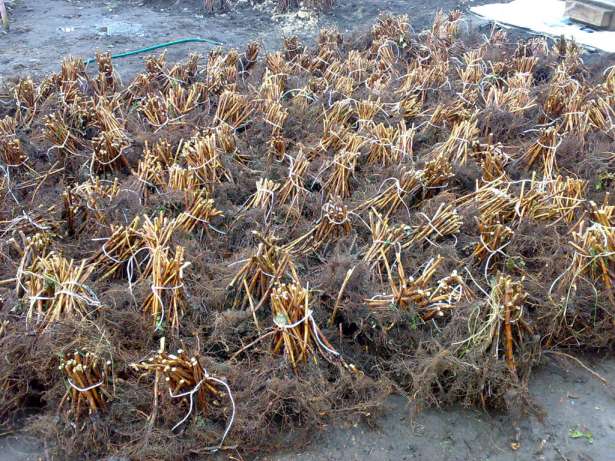
You need to plant in bushes or rows at a distance of one meter from other plants.
In all other respects, the planting and subsequent care of remontant raspberries is practically no different from ordinary varieties. Fertilizers are applied to the dug hole, a seedling is placed in it and the earth is tamped. After that, the seedling must be watered abundantly.
Basic rules of care
After planting, it is necessary to take proper care of remontant raspberries so that they bear fruit perfectly. Otherwise, if the care is incorrect or insufficient, the yield of the bush will not differ from ordinary varieties.
Basic rules of care:
- do not loosen the soil under the raspberries, as their root system comes close to the surface. Only mulching is allowed to prevent weeds;
- the plant should be watered abundantly throughout the season. Abundant watering is especially necessary during fruiting;
- feeding should be carried out in the brand with complex fertilizers. This will improve the characteristics of the fruits: they will be large and in large quantities;
- in the summer, root suckers and excess shoots should be removed;
- feeding during the flowering period and until the end of fruiting in the fall is carried out using fertilizers containing superphosphates and potassium sulfates;
- preventive measures to prevent damage to the plant by various fungal diseases (for example, gray rot and powdery mildew) are carried out in April. These include treating the shoots with Bordeaux liquid;
- the fight against various pests is carried out with the help of biological products during the flowering period.
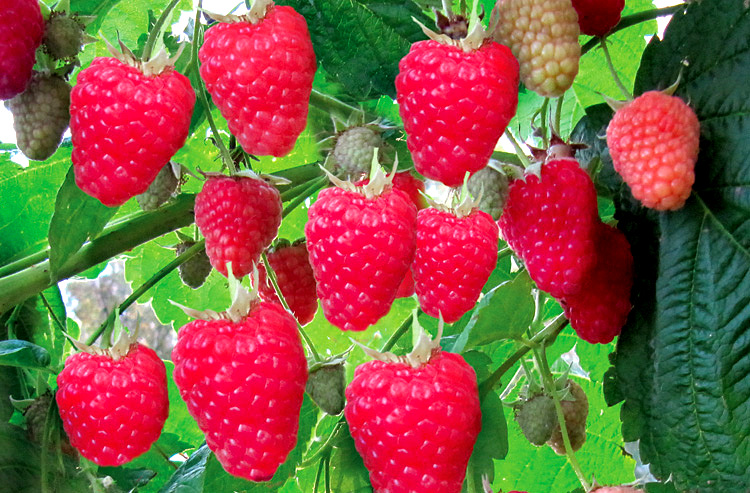
Some gardeners advise to skip the first harvest, then the berries of the second harvest will have higher flavor characteristics. Otherwise, the fruits from the second harvest will be somewhat small and not so tasty.
Thus, knowing the rules of growing and caring for remontant raspberries, you will receive an excellent harvest.
How to trim?
Not the last place in the care of these varieties of raspberries is taken by its pruning. Unlike regular raspberries, remontant varieties require a light pruning option.
Pruning is considered almost the main element of care, since it allows you to adjust such important parameters for a fruit bush as ventilation, illumination, top dressing and soil moisture.
Tips for pruning remontant raspberries:
- it is best to carry out the necessary manipulations in October-November, after collecting all the berries;
- you can cut off all annual shoots after they have borne fruit;
- annual shoots are cut to hemp.
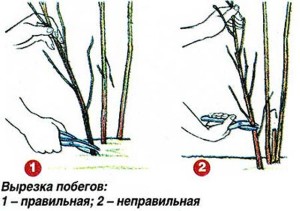
Scheme of pruning remontant raspberries
Autumn pruning greatly simplifies the subsequent care of remontant raspberries, as it allows you to protect shoots from pests and diseases that hibernate on them. But in the spring (in April), only sanitary pruning needs to be carried out. In May, you can make an additional pinching of the tip of the shoot, which will postpone fruiting to a later date.
Pest control
A special place in the care of such raspberries is occupied by pest control. We have already touched on this topic a little in the previous sections. Now we will consider this issue in more detail.
Compared to common varieties, remontant raspberries are highly resistant to various pests and diseases. But measures to combat them still need to be carried out, albeit not in such significant volumes.
Pest Control Measures:
- placing bushes of this variety at a distance from other plants, especially from ordinary raspberries, will give protection to flowers from the raspberry beetle and white larva. Otherwise, it will be necessary to treat the flowers with insecticidal preparations;
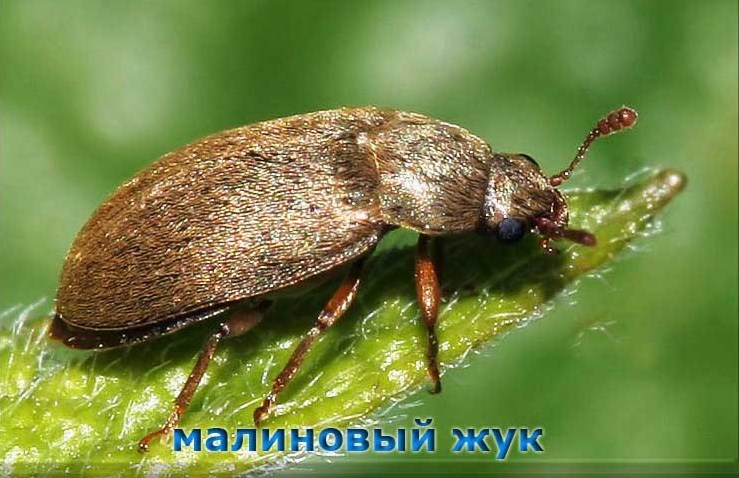
- leaves are protected from caterpillars by feeding plants with phosphorus and potassium fertilizers or chemical treatment is carried out;
- spider mites are fought with colloidal sulfur, garlic tinctures and onion peels;
It should be remembered that during the flowering period, chemical processing of raspberries should not be carried out, otherwise poisonous substances will get into the fruits.
In most cases, pest control is carried out by a biological method using insects: ladybug, lacewing, hoverfly fly larvae, dragonflies, apanteles rider, etc. It is undesirable to destroy these insects in the garden.
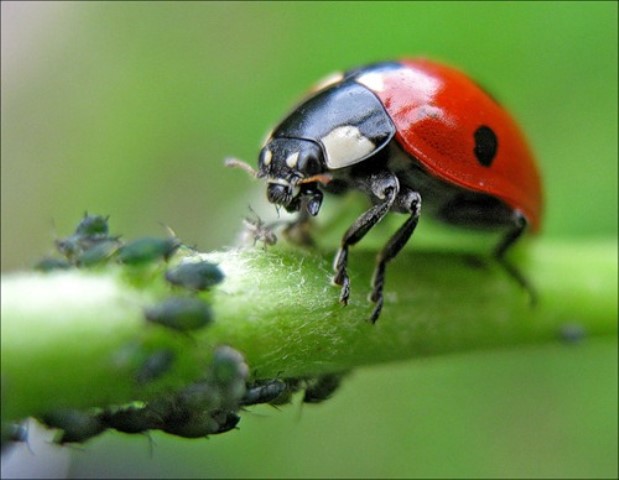
A well-chosen planting site, proper care and timely pruning will allow you to get an excellent harvest from remontant raspberry bushes several times a season.
Video "Features of caring for remontant raspberries"
In this video, you can also watch some useful tips on growing remontant varieties of raspberries.
